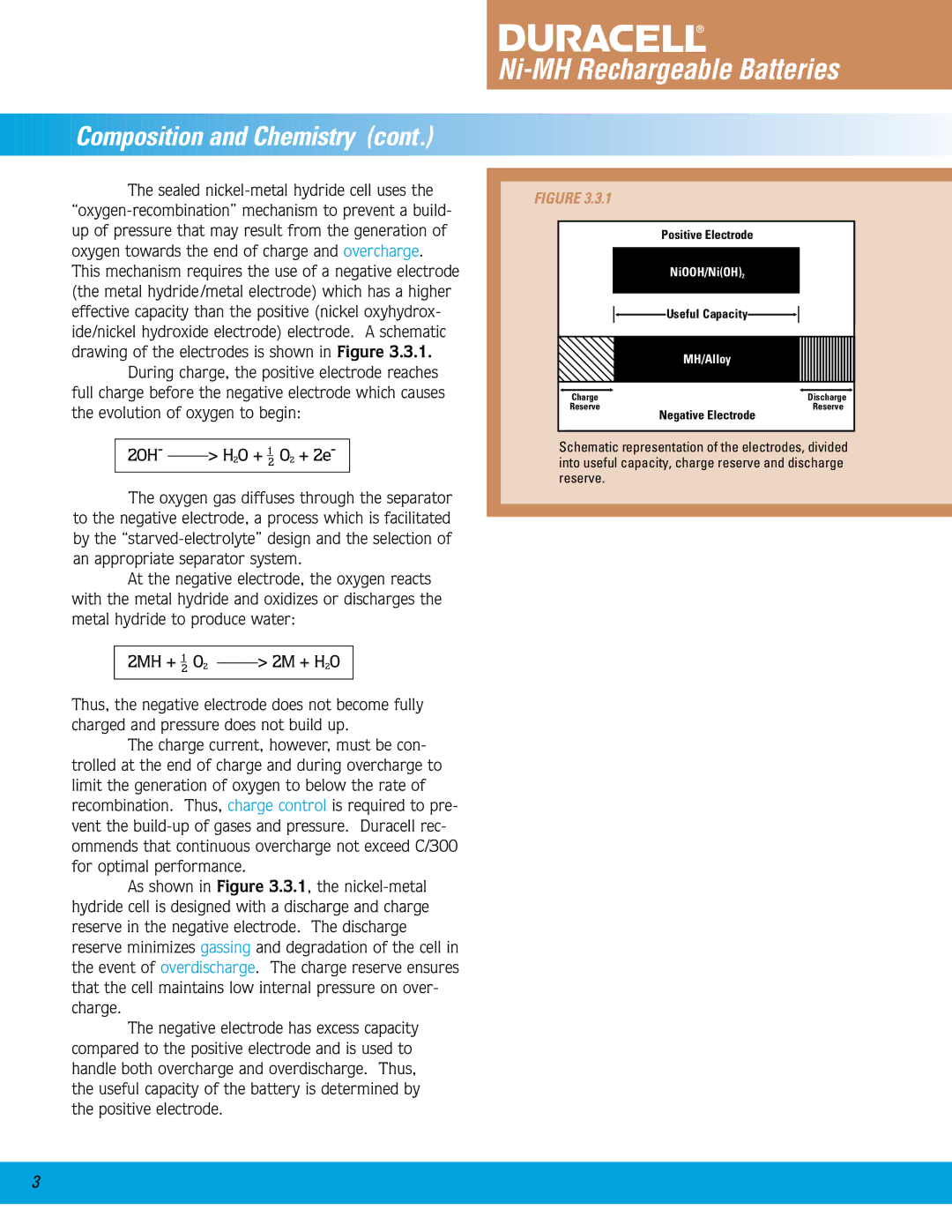
Ni-MH Rechargeable Batteries







 Composition and Chemistry
Composition and Chemistry
 (cont.)
(cont.)









The sealed
During charge, the positive electrode reaches full charge before the negative electrode which causes the evolution of oxygen to begin:
2OH- _____> H2O + 12 O2 + 2e-
The oxygen gas diffuses through the separator to the negative electrode, a process which is facilitated by the
At the negative electrode, the oxygen reacts with the metal hydride and oxidizes or discharges the metal hydride to produce water:
2MH + 12 O2 _____> 2M + H2O
FIGURE 3.3.1
Positive Electrode
NiOOH/Ni(OH)2
![]()
![]() Useful Capacity
Useful Capacity![]()
![]()
| MH/Alloy |
Charge | Discharge |
Reserve | Reserve |
Negative Electrode
Schematic representation of the electrodes, divided into useful capacity, charge reserve and discharge reserve.
Thus, the negative electrode does not become fully charged and pressure does not build up.
The charge current, however, must be con- trolled at the end of charge and during overcharge to limit the generation of oxygen to below the rate of recombination. Thus, charge control is required to pre- vent the
As shown in Figure 3.3.1, the
The negative electrode has excess capacity compared to the positive electrode and is used to handle both overcharge and overdischarge. Thus, the useful capacity of the battery is determined by the positive electrode.
3
